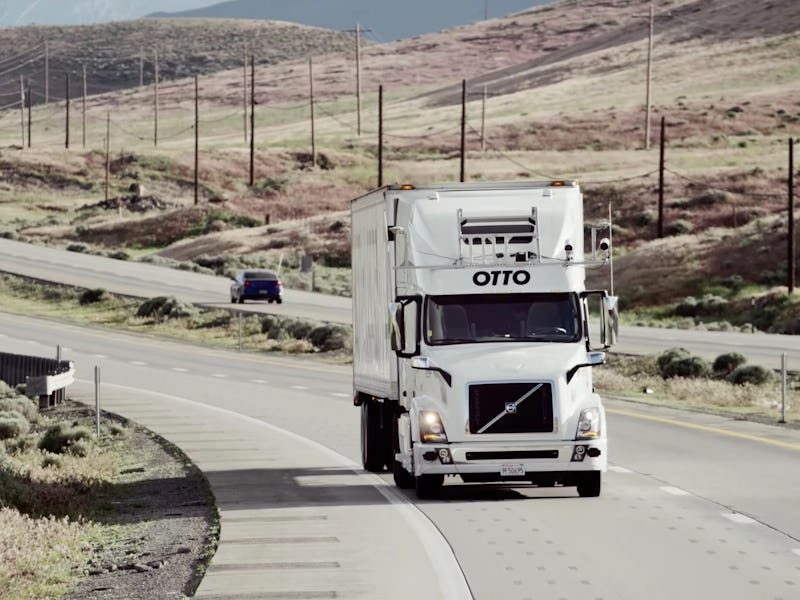In the interconnected future of travel and communications, self-driving cars will basically function like a giant smartphone with wheels, using 5G cellular technology to share information in a massive mapping network of moving devices. Anthony Levandowski, founder and CEO of Otto, told attendees at Barcelona’s Mobile World Congress that cars (and Otto’s self-driving trucks) will be able to share map data in real time to help out other cars on the road.
“The car is probably the largest mobile device out there,” Levandowski said. That means considering its needs as a portable device as well as a traditional vehicle. Telecommunications companies like Nokia and AT&T are working hard on developing 5G networks, as the 10 gigabit per second transfer speeds will help cars transfer collision data and maps faster than ever. These networks are expected to go live in the next few years, just as self-driving cars are coming onto the road.
Otto, founded by 15 former Google engineers, is focused on developing a fleet of self-driving trucks by retrofitting them with cameras and radar. Founded in January 2016, Uber acquired Otto in August for an estimated $680 million. In December, the company released a video of a self-driving truck delivering Christmas trees:
Levandowski explained that the company is currently testing self-driving vehicles at a test center in Pittsburgh.
“This is a way of putting them all in a sandbox and shaking it up and see what happens,” he said. He explained that the testing area allows the company to try out rare situations in a safe environment. “You’re able to practice them at a high frequency in this situation in order to be able to ensure that, when it does happen, the vehicle responds safely.”
But unlike smartphones, Levandowski said that regulatory hurdles mean working with governments to ensure compliance. This, he explained, is different to the mobile market where developers can create innovative apps for phones and users can download them immediately.
“We want to make sure that we’re working with the governments to improve safety so the innovation can happen quickly,” he said. “Cars might have a lot of phone-like characteristics, but the caution around legislation is understandable. Unlike phones that weigh less than a pound, cars are giant pieces of metal hurtling at high speed.”
